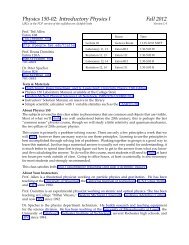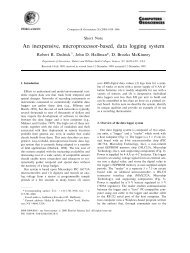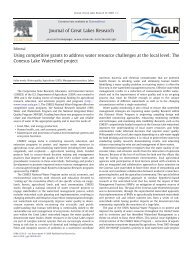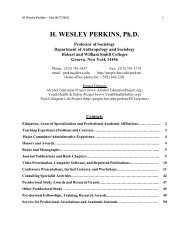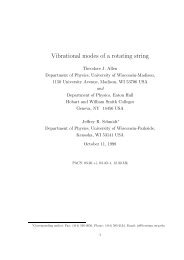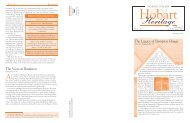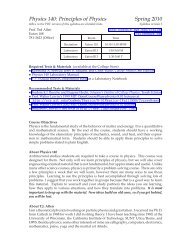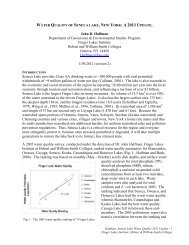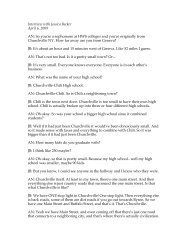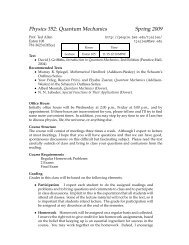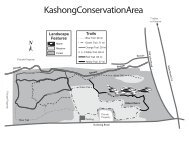Geology of New Zealand Field Trip Guidebook - ResearchGate
Geology of New Zealand Field Trip Guidebook - ResearchGate
Geology of New Zealand Field Trip Guidebook - ResearchGate
Create successful ePaper yourself
Turn your PDF publications into a flip-book with our unique Google optimized e-Paper software.
This is probably the best-known and most developed geothermal field in <strong>New</strong> <strong>Zealand</strong>. It<br />
lies at the edge <strong>of</strong> the Rotorua Caldera (like Lake Taupo, Lake Rotorua lies in a collapsed<br />
volcanic caldera). Among the features <strong>of</strong> Wai-o-tapu are the collapsed craters, steaming<br />
ground, acid-sulfate and alkali-chloride pools with shocking colors, fumaroles, geysers,<br />
hydrothermal eruption craters, and boiling mud lakes.<br />
Acid-sulfate pools are opaque yellow-green, the color produced by suspended sulfur.<br />
These pools generally have a pH < 3, but they are relatively cool. Water comes from surface<br />
run<strong>of</strong>f that has interacted with altered rock and SO 2 gas emerging from the magma below. In<br />
contrast, alkali-chloride pools are filled with water that has come from deep hydrothermal<br />
aquifers. This water may be 22°C or warmer and are saturated in silica. They precipitate a<br />
lovely white sinter.<br />
The Champagne Pool is the highlight <strong>of</strong> the park. You will recall that Champagne<br />
Pool was created about 900 years ago by a steam eruption that connected a very deep<br />
hydrothermal aquifer with the surface . The Champagne Pool takes its name from the<br />
bubbles <strong>of</strong> carbon dioxide that constantly effervesce to the surface; however, that’s where the<br />
relationship to a beverage ends. The water is about 75°C and acidic. Champagne Pool is<br />
famous among mineralogists and geochemists because it is the only place on Earth where we<br />
can see gold and silver being precipitated from a hydrothermal fluid. For example, the bright<br />
orange sulfur precipitates surrounding the edge <strong>of</strong> the pool contain arsenic (2%), antimony<br />
(2%), gold (80 ppm), silver (175 ppm), thallium (320 ppm), and mercury (170 ppm) (Lynne<br />
2003). The truly interesting observation is that precipitation <strong>of</strong> these metals seems to be<br />
mediated by microbes (Jones et al. 2001).<br />
We will start our day with a visit to Lady Knox Geyser. It erupts promptly at 10:15<br />
a.m. every day with a little help from a box <strong>of</strong> soap powder. The story goes that prisoners at<br />
the nearby penal colony were using the hot spring to wash clothes. When they dropped their<br />
soapy duds into the spring for a rinse, they induced the first eruption, which scattered them<br />
and their clothes into the bush.<br />
The science behind the soap is pretty simple. The geyser has two water chambers, a<br />
hot lower one and a cool upper one. The upper chamber is cooled by air because it has a<br />
larger opening to the surface. The lower one is heated by magma below. Overnight, the<br />
geyser’s two chambers develop an unstable equilibrium (cool on warm). When soap is<br />
thrown into the upper water chamber, the lowered surface tension <strong>of</strong> the water destabilizes<br />
this equilibrium, allowing the hot water to rise explosively, erupting up to 20 m into the air.<br />
When the eruption is over, the chambers refill and the cycle repeats the next day for another<br />
group <strong>of</strong> curious tourists.<br />
As you tour though the park, have a look at the wide range <strong>of</strong> hydrothermal features and<br />
consider the following when making notes in your notebook. Numbers refer to numbered<br />
signs in the park.<br />
• Primrose Terraces, between 9 and 12. What kind <strong>of</strong> material makes up this feature? What<br />
evidence is there that it is still forming?<br />
• Cliffs between 11 and 12. Describe these materials. How were they deposited?<br />
• Thunder Crater, location 3. Describe this feature. How is this feature related to the<br />
surrounding craters?<br />
• Frying Pan Flat between location 15 and 16. Look at the nodular materials exposed along<br />
here. What are they and how were they formed?<br />
47




